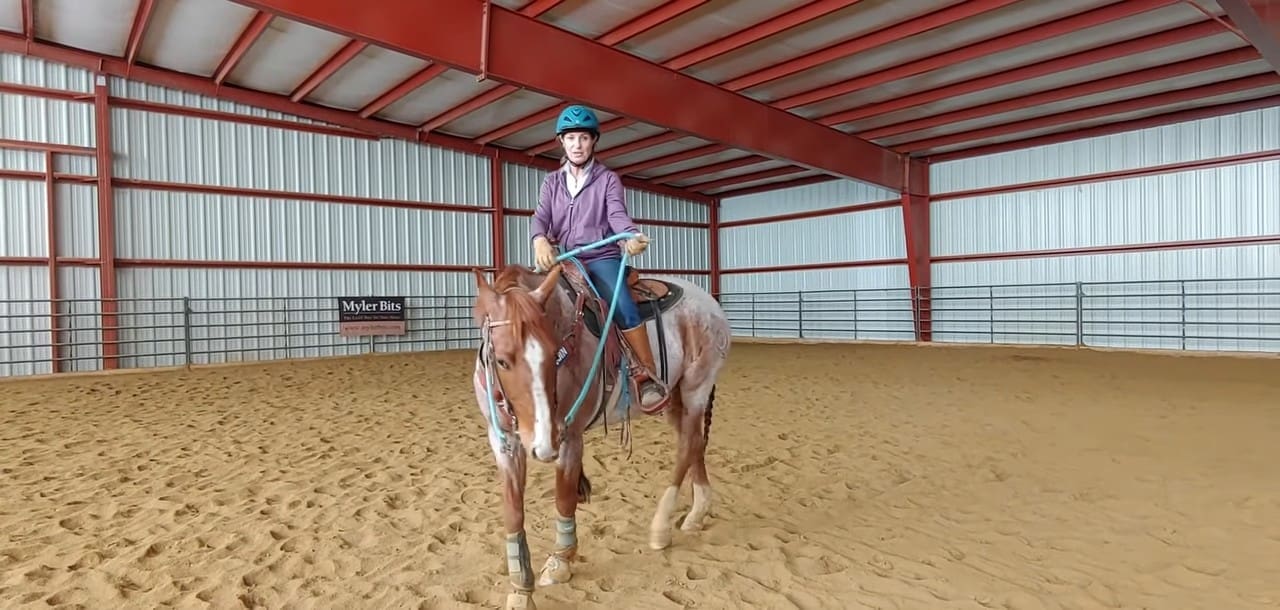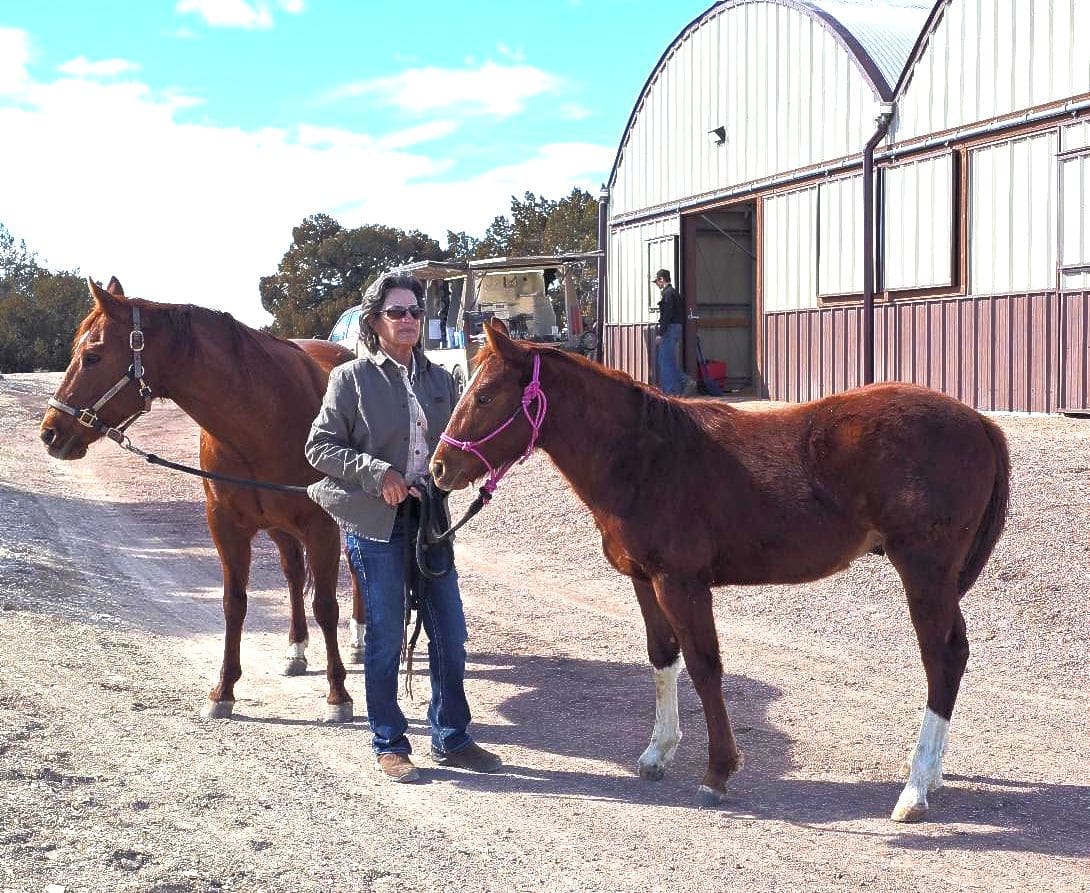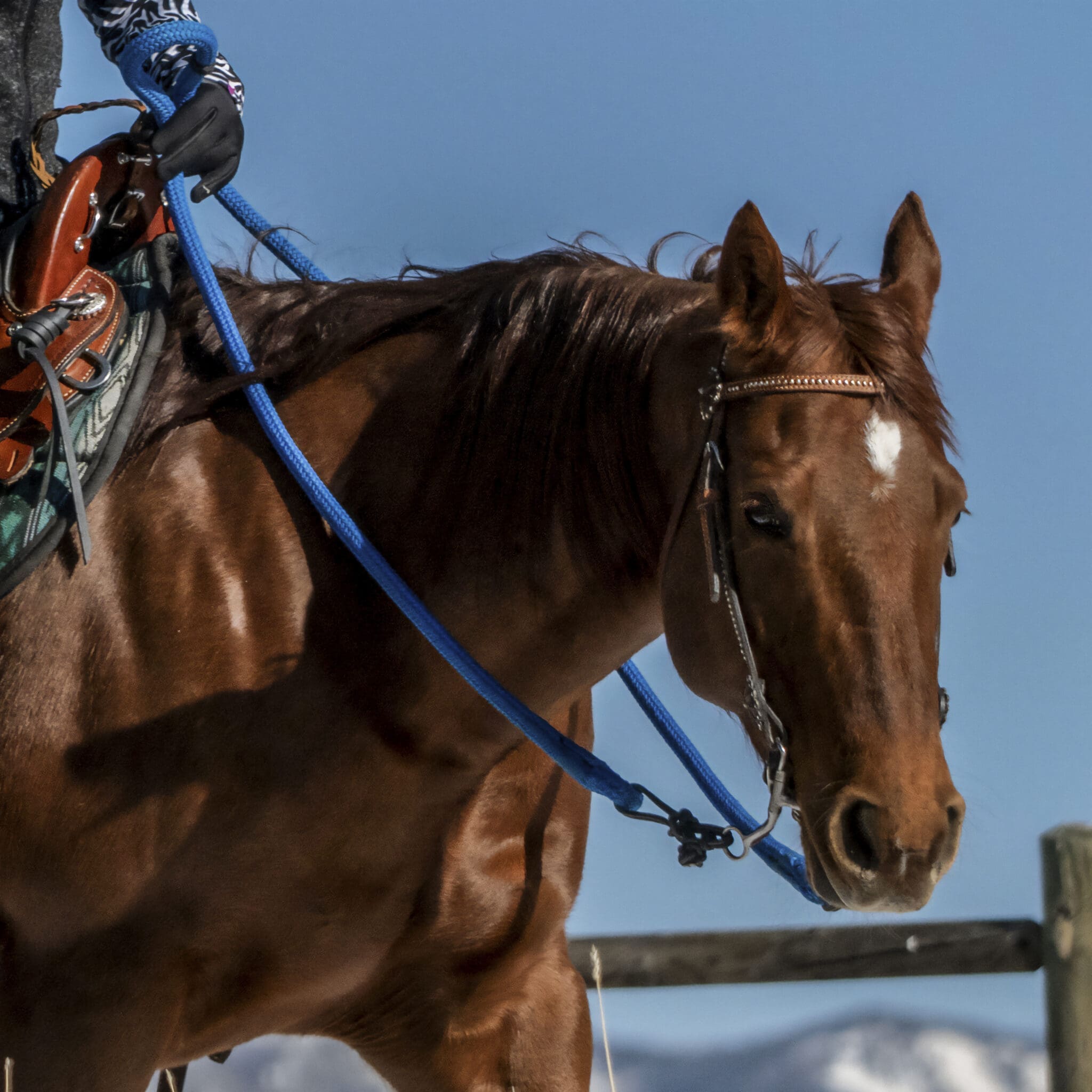Question Category: Riding Skills
Question: Julie, first off, I have to say I spend many hours reading through your website. You are a gifted and inspirational woman, and thanks for all you share.
I recently bought a 14 year old horse who has had many issues, but with whom I am making progress. I test rode him a number of times on trails, where he was great. Once we moved him to our first boarding facility, we began to really see evidence of his past. He would NOT pick his feet up, especially back right. With time and patience, he now picks them up readily. We are now working on him holding them on the hoof jack as I am a barefoot trimmer. We also found out he had Lymes disease 5 months after we had him. We wondered why he seemed weak and stiff, in addition to intermittent lameness in his back legs. He has been treated, but is still off occasionally. We are working with a vet who has done some x-rays, hoof and flexion test and is going to do some nerve blocks. I also have a chiropractor, and plan to have a massage therapist come see him, as well.
I was told he was not used in any lesson or ring work, yet, because I do not have people to trail ride with and are not sure of the area yet, we have been riding in a beautiful sand filled arena. He seems to be feeling better as we see him “moving” in the paddocks, sometimes with the most beautiful flowing trot.
I have done a lot of groundwork and round pen with him, and he is great. Very quick learner, eager to please, seems to enjoy the work, although there are days when it takes some convincing to get him to relax and listen. He always comes around when I take the time he needs. Under saddle is a different story. He was spinning for mounting, but we seem to be almost completely past that problem. Again, time and patience.
He is now responding well to directional cues, the less room we ride him in, the less rein we need. We are still having problems with “whoa.” He simply pulls and pulls. Sometimes, his response is immediate, but usually it takes some tug of war. I try not to pull too hard or long, but he just doesn’t stop when asked. I have ridden once in a bitless bridle and a rope halter, and he was pretty good, but, of course, it was after almost an hour of ground work, so I think he was pretty tired in general. We are working at building up muscle and stamina due to the lack of muscle he came to us in. Again, there has been progress there. Anyways, my specific question is in regards to riding him at the trot (sorry it took so long, but I felt the background info was pertinent). He has been very inconsistent with the trot. He pulls and plays with the bit sometimes constantly. We have had some really great days where he is quite relaxed, no fighting, very pleasurable rides. But, for the most part, he pulls at the bit. Now he has taken to dropping his head, and, it feels like he is trying to get a buck out (which he has done in the past, as well). His head goes down, he does this jumpy kind of thing, usually loses footing, tosses his head around, very speedy trot, collapses into the middle of the ring, all very ugly. I try to ride him through it as well as I can, when he relaxes his mouth/head I release the reins, and after a few nice strides, we will walk. This has been happening more lately.
His teeth have been floated twice (they, too, were in rough shape). I do not know much about his background, just that he was used in his last place as just a trail horse. I have an instructor/trainer working with us, and a younger, experienced rider who has agreed to ride him. I get input from every direction, use a stronger bit, use a flash, ride him more, trail ride him, don’t trail ride him. All very frustrating. I do not want to give up as I’ve only had him 7 months, are now at our 2nd barn, and I really feel he is willing and trainable, especially due to the progress we’ve made, and his sweet temperament on the ground and in round pen/lunging. Any thoughts would be hugely appreciated. Thanks for your time.
Sincerely, Jude
Answer: Jude,
I am glad you enjoy the website as much as I enjoy writing the articles and it is especially rewarding to know that some human and subsequently some horse is benefiting.
As I read your email, two things come to mind. First, that you are making lots of progress with this horse, maybe not as fast as you’d like, but progress nonetheless, so you must be doing something right. Second, due to the horse’s numerous physical problems, it occurs to me that some of the problems you have may have a physical cause rather than being a training issue, particularly the problems you have at the trot. Before you do anything else, have a thorough medical exam and give the vet a complete history with even more details than you put in your email.
Your trouble with the stop sounds very typical and does not sound like a physical problem so much as a lack of understanding. If you pull on two reins to stop the horse, the pressure on his mouth is so great that the horse will tend to lean into the pressure and brace against it, much like you would do if the dentist were drilling a tooth with no anesthetic. When you pull with both reins at the same time, your horse develops a stiff brace in each side of his neck and leans into the pressure. When this happens, you are in a tug-o-war with the horse, one that is not possible to win because of the weight difference between you and him. Instead, try the one-rein stop. When you want to slow down or stop your horse, simply lift ONE rein from the normal hand position (see my website for articles on position), up and diagonal toward your opposite hip, as you shift your weight back into the saddle. This will cause the horse to yield his hip as he turns and to disengage his hindquarters. Disengagement of the hindquarters simultaneously causes the horse to stop his forward motion (putting the engine in neutral) and become submissive. The instant you feel a change in the horse (well before he actually comes to a stop) drop your hand dramatically to his neck in a clear and meaningful release. You can pick up the rein again if he does not come to a complete halt, but it is critical to release the horse when he first makes an effort to do the right thing. Timing is everything in horse training and the sooner the release comes, the better. At first, you may end up turning your horse as he disengages and stops but soon he will stop on the straightaway when you slightly lift one rein. Make no mistake about it, your horse wants to stop, he just doesn’t understand what is expected of him and his mouth hurts. When a horse doesn’t stop right away, the rider tends to pull steadily harder. A horse’s natural reaction to pain and discomfort is to run away from it. Therefore sometimes the horse inadvertently is taught to speed up when the rider is asking for the stop.
It is imperative that you use your seat/weight aid when asking the horse to stop. If you pull on the reins first, without using your seat, you are lying to the horse and sending him a conflicting signal. My videos on riding, particularly Volume 2, Communication and Control, show in great detail how to use your seat effectively and how to cue the horse to stop with your seat and not the reins.
Also, when teaching any new cue to the horse, make sure you sequence the cue into three parts. For instance when I teach horse to stop, first I exhale and say “whoa,” then shift my seat/weight, then finally pick up on the reins, if necessary, in a one-two-three rhythm. If you use this sequence consistently, the horse will learn to stop before you ever touch his mouth. All horses are happy to do that if they know it to be an option. No horse in the world wants his mouth pulled on. If you can rule out physical causes for your issues at the trot, then you can address the training. Your horse, having been a trail horse, may never have really been taught how to properly respond to cues. If he has spent his whole life following other horses down the trail, he didn’t really need to know much because horses do this naturally.
You’ll have to go back to some very basic training to teach him to stop, start and steer. Make sure you are using a snaffle bit and teach the horse how to give vertically and laterally to rein pressure (there is info on my website about this). The trouble you describe at the trot, if not a physical problem, sounds like it is related to the bit and the rider’s hands.
Chances are the horse does not act this way unless there are hands attached to the reins. Does he do it when he is saddled and bridled but unmounted in the round pen? What if there is a rider on him in the round pen but not holding on to the reins? My guess is that he would be just fine. When we increase speed on the horse, the natural tendency is for the rider to increase the rein contact too. And when he starts acting up, you are probably taking an even greater hold on the reins, and that is likely what is causing the problem.
I suggest you spend some time riding him in the round pen at a trot with loose reins tied to the horn. Pick up the reins if you need to, but otherwise let him trot around on a loose rein and find a steady and relaxed trot. Then you can start working on stopping him with your seat instead of with the reins. Once you are both accustomed to a relaxed trot on a loose rein, try it in the bigger arena, holding onto your reins but keeping them loose, with no contact on his mouth. When you do use the reins, use only one rein to either stop or turn and make sure you use your seat aid too and that you always move your hands in SLOW MOTION so that the horse has an opportunity to respond BEFORE the pull on his mouth comes.
You have made a lot of progress with this horse. Keep up the good work.
JG
Copyright ©Julie Goodnight 2000. All Rights Reserved. No part of this website may be reproduced without owner’s express consent.



